
Digital marketing strategies for online stores
You may need to start undertaking a variety of digital marketing strategies to best promote your online store.
Today, ShoppingFeeder is discussing some of the most popular options that you can start using today.
Social media marketing for online stores
It would help if you were using social media platforms like Facebook, Instagram, Twitter, LinkedIn and drive website traffic. These platforms include posting content on your social media pages. You will also engage with potential customers and other business professionals, analysing your results and running social media ads.
Social media marketing lets you take a personal approach to generate user engagement with your brand, boost website traffic, and create sales.
Content marketing for online stores
Creating content is a growing, as businesses have found ways to leverage this to improve customer loyalty and sales. Content refers to several different resources and can include images,
blog posts, articles, podcasts, social media posts, videos, email newsletters, infographics and a whole lot more.
One of the most significant benefits of posting unique and creative content include:
- Gaining positive customer interaction.
- Promotes conversation around your brand and its offerings .
- Promoting new information to your audience.
- Telling a unique brand story.
Content Marketing is also beneficial for improving Search Engine Optimisation (SEO) rankings.
You might feature your blog on your online store or create guides to assist customers when using your product. If done well, content marketing can be compelling in connecting with customers. It also helps to establish a unique voice for your eCommerce store.
SEO marketing for online stores
SEO is an abbreviated word for Search Engine Optimisation, and describes exactly that. An eCommerce store needs to ensure that its search rankings are performing well. This is true because most customers don’t bother clicking through multiple Google pages to find a product.
To rank highly, you’ll need to update your website with relevant and high-quality content constantly. Your website should have a positive user experience and should contain minimal errors.
It’s best to include keywords in your product titles and descriptions. You could use many commonly searched keywords in blog posts or other resources. SEO is crucial for improving traffic to your store and should be included in conjunction with any marketing plan.
Email marketing for online stores
If you’re looking for a powerful way to send unique messages to many customers at once, look no further than email marketing. It would help if you remembered, though, to be careful about the content within your emails, as you don’t want your customers to brush you off as ‘spam’ in their overflowing inboxes.
The key to avoiding yet another deleted email is to personalise your emails as much as possible. Your email campaigns can include new promotions. However, it should also include helpful and informative content. For example, remember to include your pricing and shipping details if you’re having a sale on a specific delivery item.
Some helpful information to add to your emails includes upcoming events related to your business or broader industry and any news or updates in the company that you want to share.
PPC marketing for online stores
PPC is an abbreviation for pay-per-click marketing and describes a form of online advertising where an advertiser will pay when potential customers click on ads that redirect them to a website. You can think of it as paying for traffic rather than growing traffic organically through search results or content marketing.
PPC is a valuable method for increasing conversions as more people will visit your website, but it can be more costly than organic growth. Customers must convert when they visit your website.
Typically, a successful PPC ad will contain:
- Appropriate keywords and keyword grouping.
- A good landing page design.
- Excellent copy that promotes traffic.
Successful PPC campaigns can assist your e-commerce store in ranking higher on search engine pages, so it’s certainly a powerful strategy.
When it comes to selling products online, pay-per-click ads are essential and appear in different forms.
PPC channels: Pay-per-click advertising is available on Facebook, Google Shopping, and search ads, affiliate networks like Shareasale and more.
Types of PPC ads:
Display ads
These are text-based, image or video ads placed on websites or search engines encouraging users to click-through to a landing page. An example of a display ad is the banner ad shown below:
Benefits for advertisers:
Display ads are flexible in appearance, so you can choose a style and advertising format to help you achieve your goals. You can also reach the right audience by placing your ads on the right websites, and this will help you create brand awareness, if not conversions, straight away.
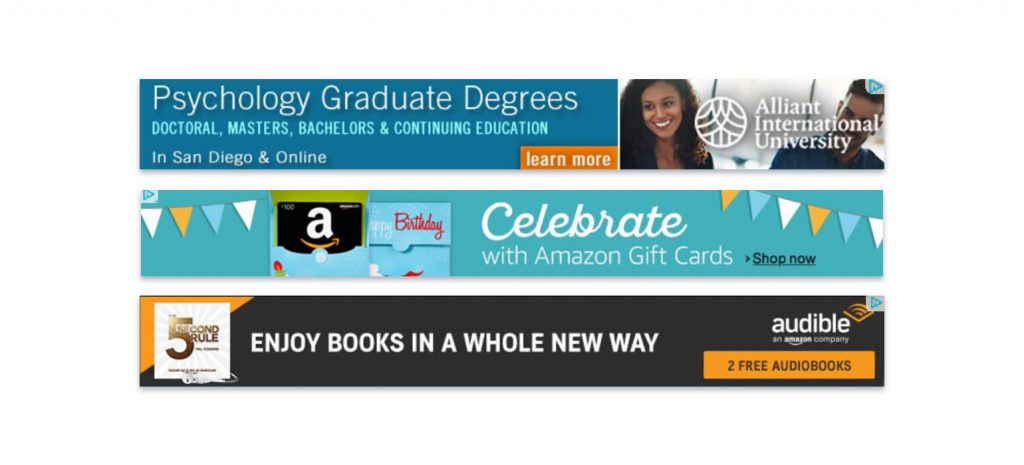
Social ads
Social ads are ads placed on social media networks, such as the example below:
Some of the most popular ssocial media networks are: Facebook, LinkedIn, Pinterest, Twitter, Instagram and TikTok.
Benefits for advertisers:
Social media permeates daily life with millions of daily active users across the globe. Beyond the sheer volume of users (potential audience), users are also more engaged on social media platforms.
Using social media is easy; signups, downloads, and purchases are just a click away which means less user resistance. For all these reasons, social advertising offers one of the highest conversion rates of any marketing medium.
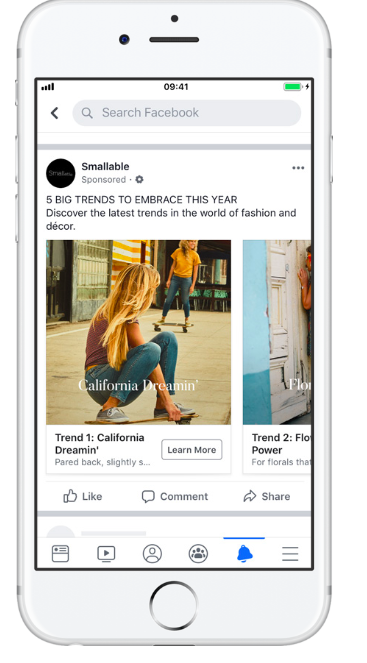
Search ads
Search ads are the sponsored page links that get first place on the search engine results page. See the example below:
Search networks: Google, Yahoo, Bing
Benefits for advertisers:
Clicks on search ads are also intent-based, as is the case with shopping ads. Being at the top of search results also means potentially millions of impressions, contributing significantly to brand awareness.
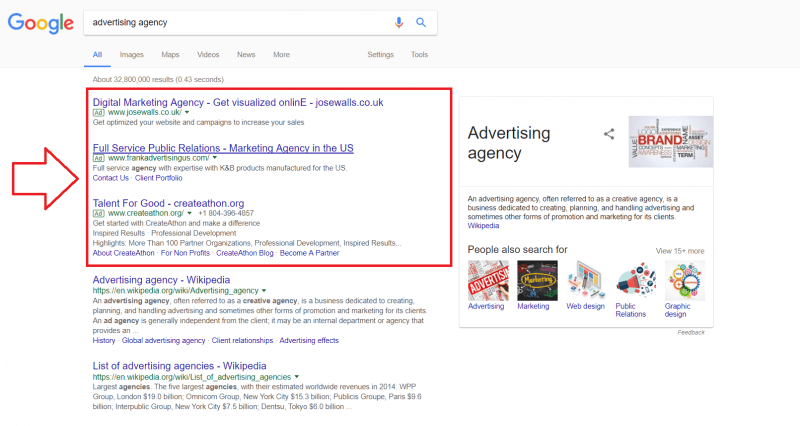
Remarketing ads
Remarketing networks: Facebook, Google ads, Twitter
Benefits:
With retargeting ads, you can promote your products, on Facebook, to users who have browsed your e-commerce site in the past.
Remember, the more shoppers are exposed to your products, the more likely they are to make it to final purchase, so retargeting brings you the kind of traffic you want- traffic that’s more likely to convert.
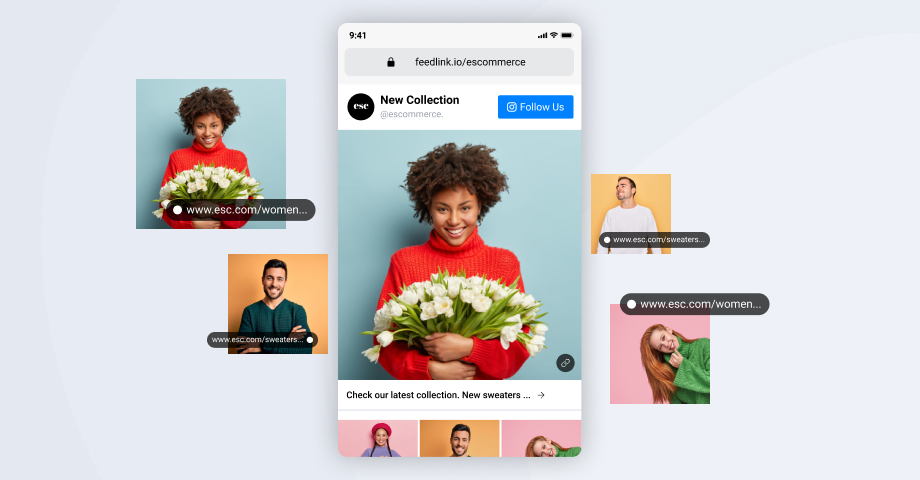
Shopping ads
Shopping ads appear on comparison search engines or CSEs like Google Shopping and Amazon. They allow consumers to search for, compare and shop for physical products across different brands and retailers who have paid to advertise their products.
Benefits for retailers:
People who click on shopping ads have a high intent to buy because the searchers have all of the essential information they need.
Like the one shown below, shopping ads give users a visual frame of reference and include details such as price, colour, brand, and so on. Visitors who know what your product costs and looks like yet still clicks on it are much more likely to convert.
CSEs: Bing Shopping, Google Shopping, Amazon, Shopzilla, Idealo, Yahoo Shopping, BuyVia, Shopping.com, Shopzilla, PriceGrabber, ShopMania and Bizrate.
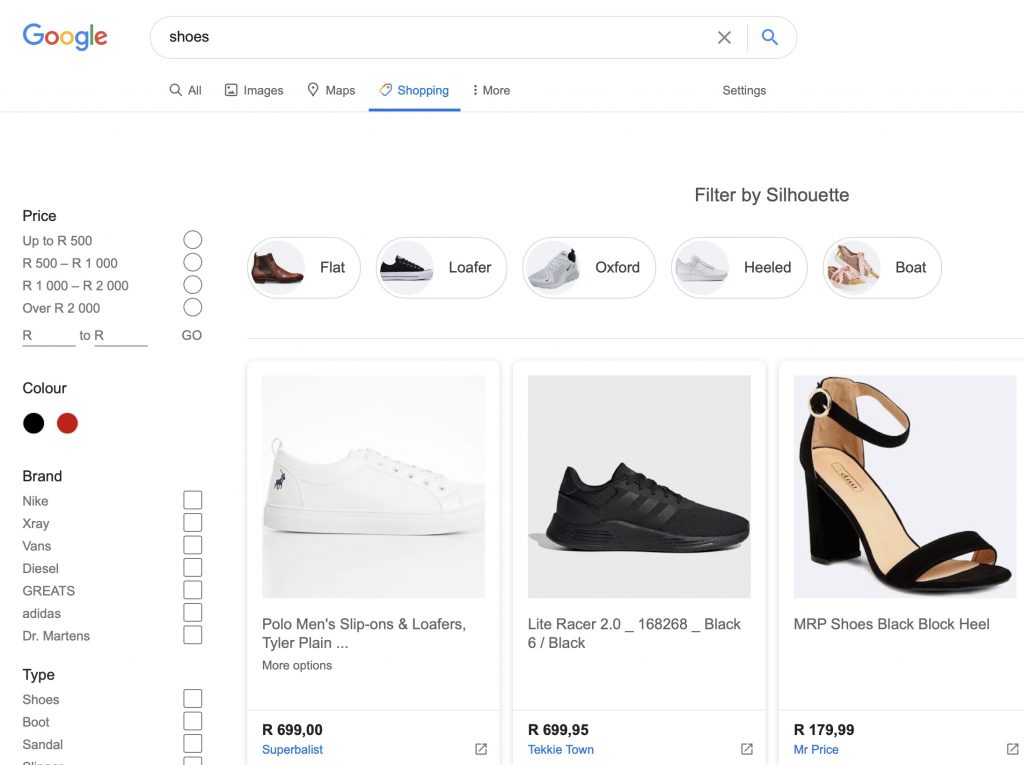
Affiliate marketing
There are two parties involved in affiliate marketing: merchants and affiliates. Merchants are retailers who upload product catalogues to the network; affiliates are independent bloggers, content creators or influencers who drive traffic on the merchants’ behalf in exchange for a commission fee.
Merchants sign up, import their products and approach affiliates they believe can generate the desired traffic to their online stores. Affiliates can, in turn, browse merchants’ product packages to find those they feel their audiences will respond well to, after which they can market those products in any manner of their choosing.
Essentially, the affiliates are given complete control over the marketing tactics and will only receive a commission if they succeed in generating traffic or conversions for merchants.
Benefits for retailers:
Affiliates like bloggers and social media influencers often appeal to niche markets merchants may not have considered. With the financial incentives in place, affiliates will do their utmost to drive as much traffic for merchants as possible.
This means new business, new audiences and greater exposure. Successful bloggers are usually skilled at ranking organically in search engines, which means improved searchability for merchants’ websites by extension. Merchants ao get to decide the commission rates for affiliates, which can differ for each product or program. Affiliates can earn based on clicks, leads, traffic or conversions, meaning merchants only pay for results.
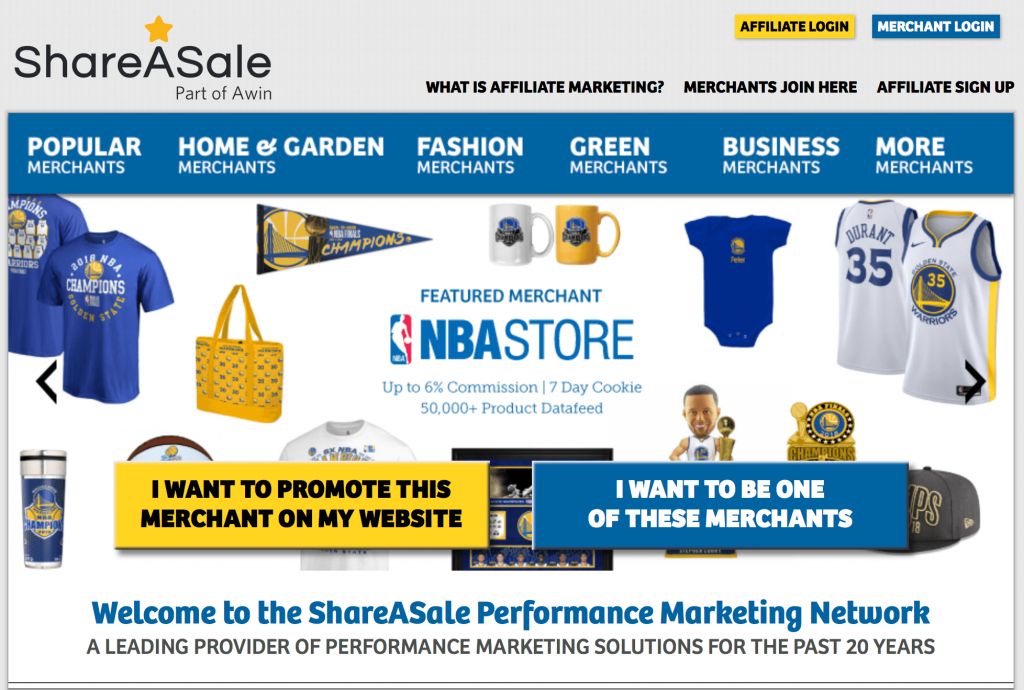
Affiliate networks: ShareASale, ClickBank, CJ Affiliate, Amazon Associates, eBay Partner Network (EPN), FlexOffers, Pepperjam and Rakuten Marketing.
Conclusion
No matter which combination of digital marketing strategies you decide to use, we advise trying something new and experimenting with a new advertising format.





